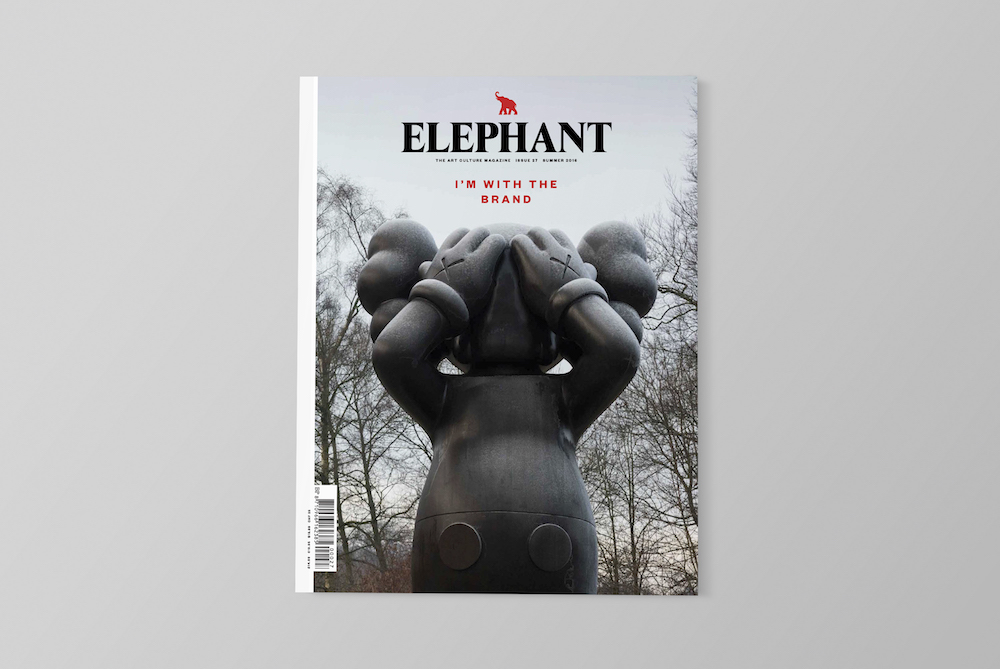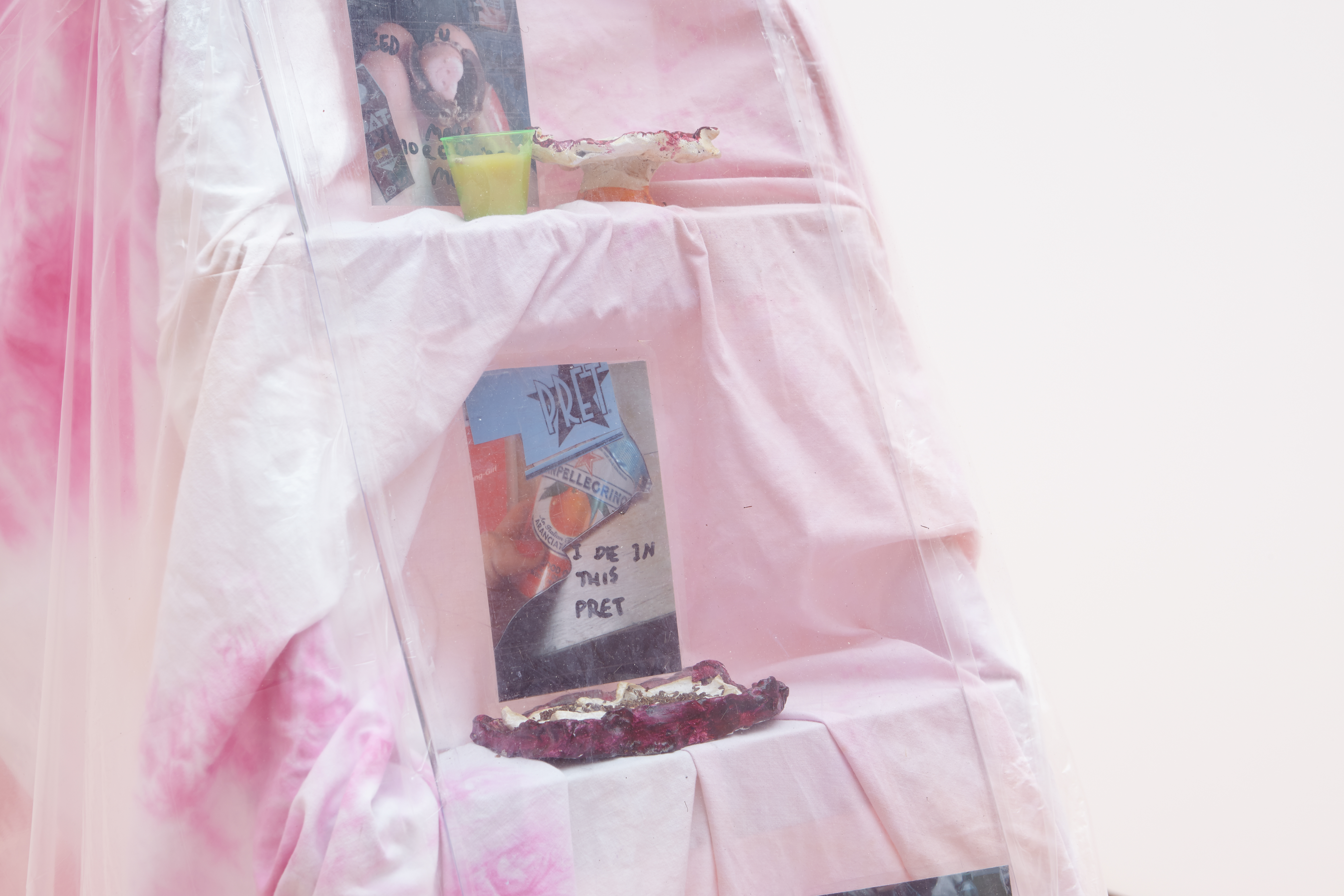
Brands have a regular if somewhat secondary presence in the work of Holly White, where they provide the stage and set for the artist’s highly personal, diaristic practice. However, including brands in her work doesn’t come without its complications, White tells Emily Steer.
This feature originally appeared in Issue 27.
Do you see brands as a simple, unproblematic backdrop to life or do you find them a complicating presence?
It’s difficult for me that these particular brands that can symbolize capitalism become so involved in my emotional experience. I’m interested and troubled by how, say, a jar of Sunpat peanut butter can come to mean something that’s important to me. I’m also interested in reappropriating or reunderstanding the visual language that branded objects use. It’s not just the Sunpat jar that I might be using, there is the sun image within that. I want to take that jar and rethink the sun that’s on that logo.
I make work a lot about the last person or people on Earth after the apocalypse, and also the new beginnings and new communities that that might create. If we consider this Sunpat jar within a post-apocalyptic setting it doesn’t lose its original language, because we do recognize and remember it, but, in the instance of my Green Flash project, it becomes reused because of its sun imagery rather than because it’s a branded peanut butter. I’m interested in the ephemera of these brands, but reappropriate them with a new language so that they become something else in this scenario.
Do you have a nostalgia or connection with brands from when you were younger?
I would say that the nostalgia I explore is for a much more recent past, an almost-present. It’s a nostalgia that I feel when I’m aware of a certain currentness, where it is so current that it’s already slightly past. It’s a nostalgia that’s short term, I guess.
Was there a brand that sparked it for you?
I used to make a lot of work about McDonald’s when I was a teenager. I was so actively against it, and used McDonald’s as a symbol for capitalism or globalization. I was really into subverting adverts and culture-jamming. I wouldn’t have admitted it, but I think I was also using McDonald’s because I was actually very attracted to their imagery, I was really into the Americana of it all. Now I recognize things are more complex—that sometimes you can enjoy something and have it really caught up in your life but at the same time be really repulsed by it and be upset by it.
You also have lots of references to musicians like Taylor Swift and Lana Del Rey. Do you see that as a brand relationship?
I think if I’m honest, with brands and pop stars the starting point is always a real love and fascination with them or their music. With these two women I often feel an emotional connection to them and their honesty and their stories. If I feel that one of Taylor Swift’s songs describes my story then I might use it, because I feel she can say it better than I can. But again of course that is also conflicting because that industry and a lot of the things it may say are also very difficult for me.
There is an idea about corporations and brands being wrong, but we can’t help but connect with them because they’re all around us. They all just bleed into my work, in the same way that my friendships and romance might come in. While they’re a backdrop to my life, I also like using the brands I do because they’re really transparent in what they’re doing. There is no pretence with McDonald’s. It can just be an enemy in a very obvious way. I often feel more of a danger using imagery from companies where their systems and how they tie into these systems of oppression are much more hidden. I think I quite like using Pret a Manger because it is—in the same way as McDonald’s—a very straightforward presentation: the choices they offer up are quite easy in how they present themselves. It becomes a McDonald’s version of a French café and I’m comforted by the transparency of its falsity.
That’s why those companies can become these strong structures through which to tell a story or stories; narratives can be tied together with this consistent foundation. It’s interesting actually thinking about using brands in this way, as people usually ask me about personal branding in relation to the way I work. Although I don’t see it as such a conscious connection between the two, I think they might both be combined in a wider exploration of branding. For example, there are certain ways that I work, and that brands work, which means that I could incorporate Roses sweet wrappers into the work but then also incorporate a repeated motif of the sun, an invented brand. It explores the language of branding, which isn’t just about exploring existing branding, but creating new brands.
Your work has a collective feel.
Yes, I think I do use a familiar language which connects me to a particular online community, and my friends and community are really influential, online and offline. But in the instance of my website I don’t really approach it in that way. Obviously I use a specific language and approach to web design but, for example, also I just love dolphins. I went to a beach in India and saw dolphins in the morning and I really fell in love with them. I think they’re really nurturing and beautiful, and that’s why I like to use gifs of them a lot. But yes, as we’ve talked about, those images also simultaneously have an existing meaning, they could be seen as a symbol of a certain interaction with nature, or a particular nineties vision of utopia.







